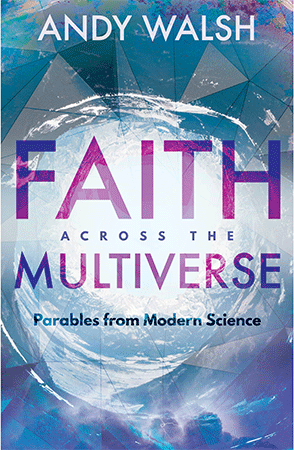
This reflection on the themes of Solo: A Star Wars Story tries to avoid spoilers, but as always feel free to wait until you’ve seen the movie if you want to know nothing about it when watching.
“Fast ship? You’ve never heard of the Millennium Falcon?” “It’s the ship that made the Kessel Run in less than twelve parsecs.” With those lines, Han Solo and ultimately George Lucas stirred up a controversy still brewing 40 years later. Han’s boast sounds impressive, but when you find out a parsec is a unit of distance, not time, you wonder how it’s meant to prove the speediness of the legendary ship. Hands have been waved at explanations, but now with Solo we get as much of an in-galaxy justification as we can likely expect. A trivial point to be sure, but the deep dives into astrophysics inspired by that dialogue represent about as much science as Star Wars is interested in. To be sure, all of the films feature technology far beyond our current capabilities, but mostly they are part of the setting rather than the theme.
Even when it is not delving into the arcana of the Kessel Run, Solo leans more towards science fiction then perhaps the other films in the saga. Science fiction stories describe the future to help us reflect on our present relationship with current discoveries and technologies. Fittingly for the story of a hot-shot pilot, Solo is concerned with the technology of spaceships and the interstellar travel they make possible, to a greater degree than I sensed from previous episodes. No, the film doesn’t reveal anything more about hyperspace or deflector shields. It’s not the kind of science fiction that’s interested in quasi-scientific hypothesizing of how anything works, but instead meditating on what we do with it.

 )
)For Han, spaceships mean the freedom to go anywhere but here. When he met him in A New Hope, he had that ship and it was Luke who came to him for help in getting away. Perhaps it is not surprising we are revisiting that theme to examine it in greater depth. When George Lucas made the original film, he had just finished American Graffiti; now the star of that film, Ron Howard, is behind the lens. It’s not a journey of parsecs to get from the car culture of southern California to Han Solo’s love of spaceships. (It doesn’t hurt that Harrison Ford, the original Han Solo, also appeared in American Graffiti.) All we need is some dice hanging from the rearview mirror…
We’ve also had 40 more years to consider our relationship with cars (and the fossil fuels they run on) and add nuance to our perspective, which Howard and writers Lawrence and Jon Kasdan bring to the galaxy far, far away. Through his adventures in Solo, Han realizes ships don’t bring freedom equally. Sometimes, the ability to travel great distances means the ability to accumulate resources from far and wide, including the resources needed for travel in the first place. In the most extreme cases, those resources are human, or rather sapient, ones–including droids, another sci-fi element of Solo; more on them next week. While Han never loses his desire to fly away, he finds that he can’t ignore everyone else who needs freedom at least as much as he does.
Critique of imperialism has obviously always been central to Star Wars, but I’m not sure any of the stories have explored quite so directly how technology enables that imperialism. Sure, there’s no mistaking that laser-powered battle stations help dominate the galaxy, but it’s easier to see the dark side of weapons of war. Transportation is the kind of technology that so many of us use and benefit from so ubiquitously that we may not even recognize it as technology, especially as the kind of technology science fiction is interested in. If anything, it is traditionally the domain of the western, a genre Solo borrows heavily from. Westerns frequently invite us to consider what happens when trains (and less explicitly, ships before them) bring formerly distant civilizations into close contact.
Of course, trains weren’t the first such innovation either, they just expanded the radius of possibility for such interactions both in terms of spatial and cultural distance. Even going back to the Bible we see these kinds of meetings, such as the Babylonian conquest of Judah. We also see transportation technology used for more positive ends, as with Paul’s missionary journeys. Yet despite the Biblical precedent, I don’t usually see transportation discussed when we talk about technology and theology. We certainly should consider how to interact with genetic editing, artificial intelligence, and other emerging technologies. At the same time, I think there is a place for reconsidering how we use more commonplace developments. The only theology of transportation I am familiar with is that of the Amish. But perhaps there are others I just haven’t come across yet. Do you have a theology of transportation, or do you know of other individuals or traditions that have one?

If you found this post interesting, you might be interested in my forthcoming book on science, theology and nerdy pop culture: Faith across the Multiverse. Now available from pre-order from Amazon and Barnes & Noble; more links on the publisher’s site. Myself and the book will both be making an appearance at the American Scientific Affiliation annual meeting; consider joining us there.
Andy has worn many hats in his life. He knows this is a dreadfully clichéd notion, but since it is also literally true he uses it anyway. Among his current metaphorical hats: husband of one wife, father of two teenagers, reader of science fiction and science fact, enthusiast of contemporary symphonic music, and chief science officer. Previous metaphorical hats include: comp bio postdoc, molecular biology grad student, InterVarsity chapter president (that one came with a literal hat), music store clerk, house painter, and mosquito trapper. Among his more unique literal hats: British bobby, captain’s hats (of varying levels of authenticity) of several specific vessels, a deerstalker from 221B Baker St, and a railroad engineer’s cap. His monthly Science in Review is drawn from his weekly Science Corner posts — Wednesdays, 8am (Eastern) on the Emerging Scholars Network Blog. His book Faith across the Multiverse is available from Hendrickson.

Laura Everett’s book, Holy Spokes, gives a glimpse into a theology of transportation – centered around biking – might look like. It’s a good memoir and an enjoyable read, so I recommend it to anyone wanting to think more about getting around without a car in a part of the world that tends to focus on cars as the best (and only) transportation.
Thanks for the suggestion, Brenda. Perhaps it will encourage me to find ways to bike as much as I used to.